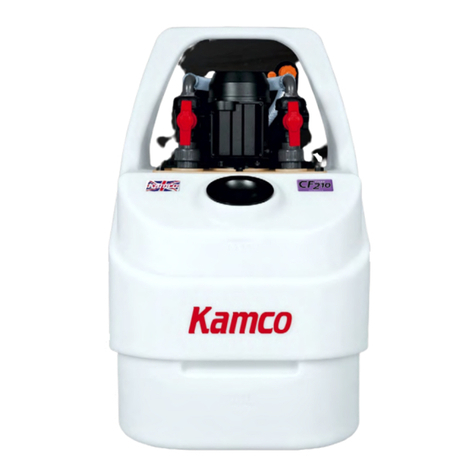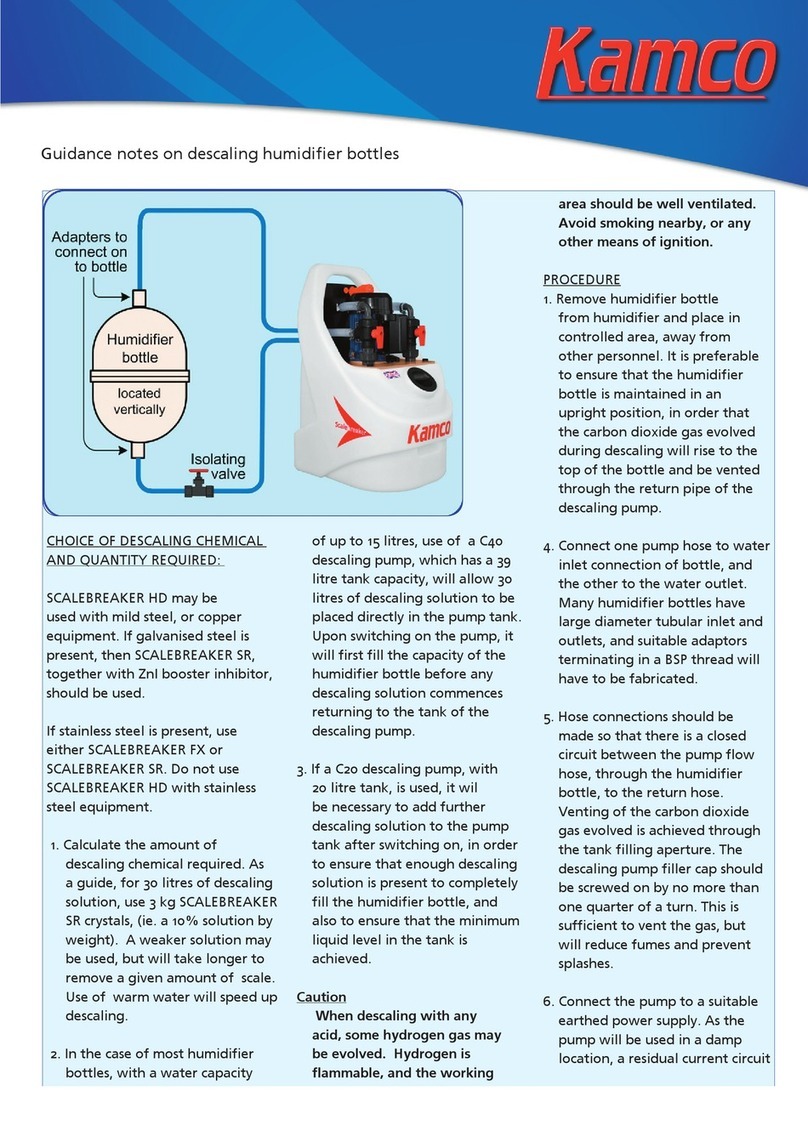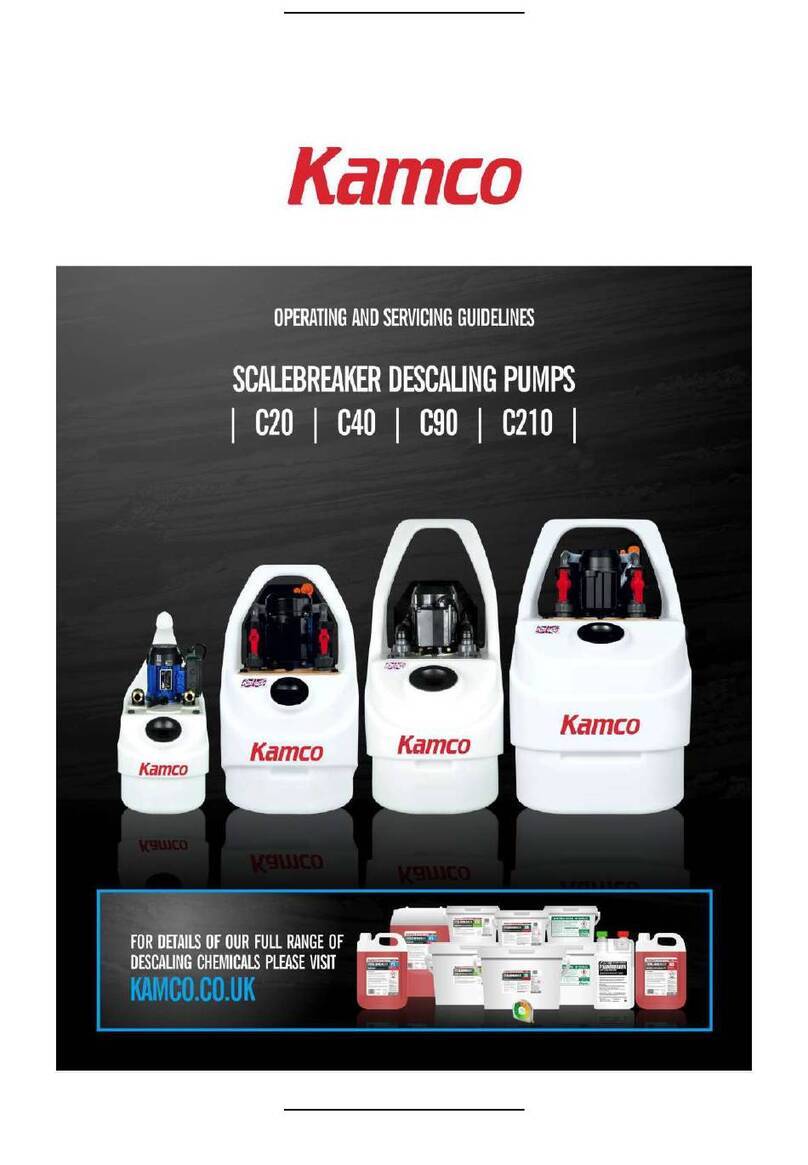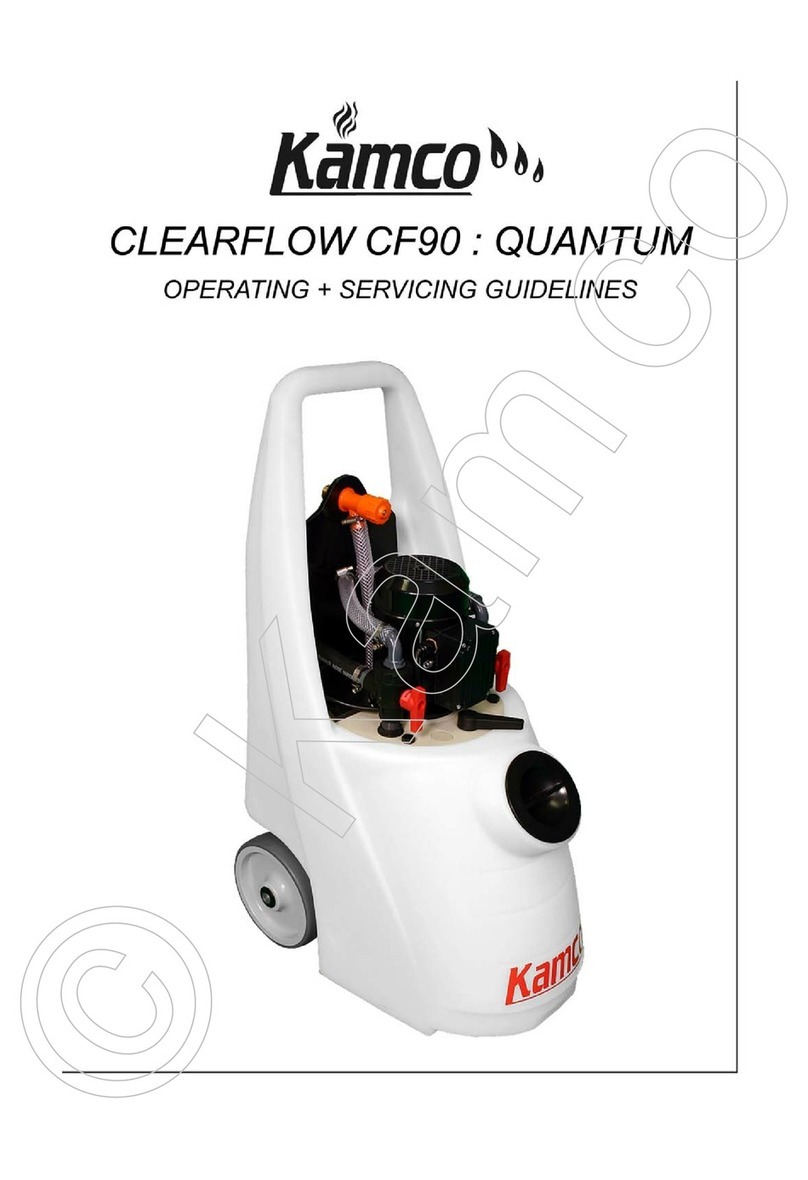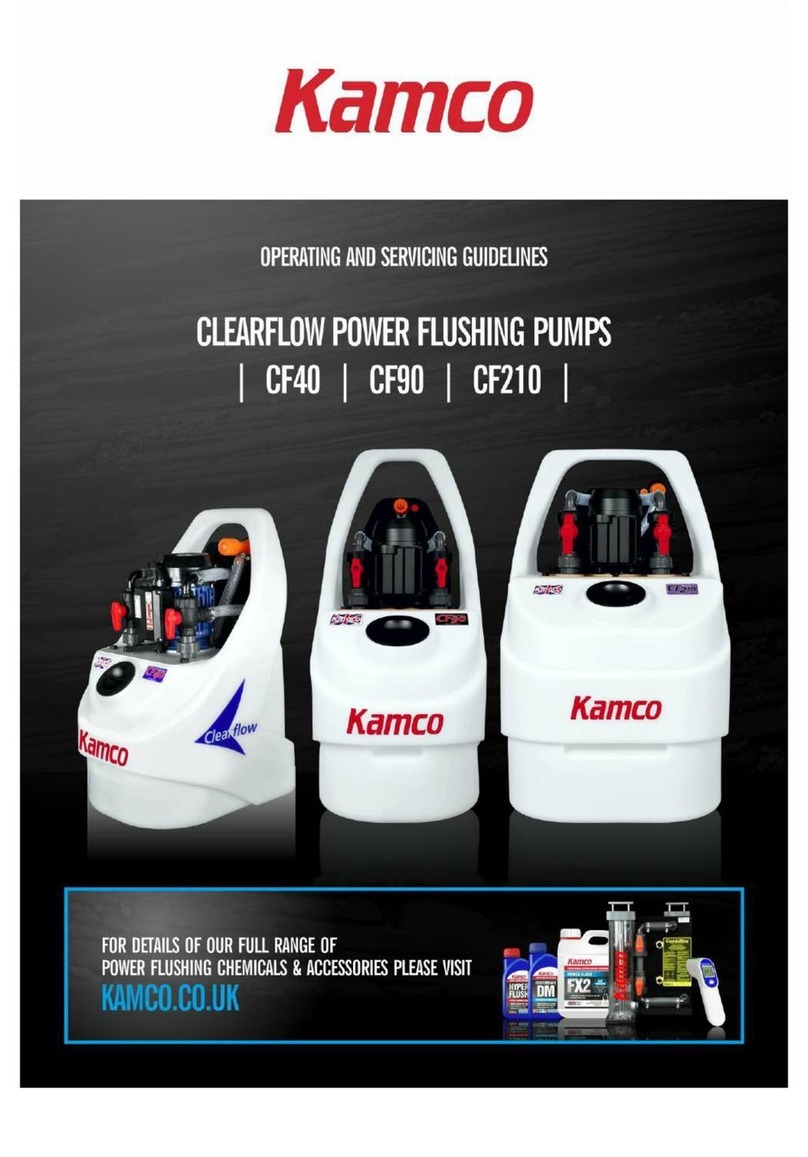
open the isolating valve (see point 5)
to allow circulation to commence. If
water level drops initially, add more
water to pump tank, and check that
all connections are tight.
11. To commence descaling, slowly
add descaling chemical into pump
tank. Once liquid is returning into
the tank from the coil, check to see
if there is a build up of foam on
top of the liquid in the pump tank.
This may happen when there is a
large build up of reactive limescale
in the coil. If this is excessive, add
FOAMBREAKER carefully to the tank
to reduce the foaming.
12. As circulation commences, bubbles
will be seen in the return hose to
the pump, indicating that limescale
is being dissolved.
13. Continue circulation through the
cooling coil and descaling pump,
briey reversing the direction of
ow periodically.
14. Check all connections regularly for
tightness and leaks, and if foaming
is excessive, carefully remove
descaling pump tank cap and
add more FOAMBREAKER to the
descaling pump tank.
15. Scale removal can be considered
complete when bubbles are no
longer seen in the return pipe,
and the descaling solution is still
sufciently strong to remove hard
water deposits.
16. SCALEBREAKER descaling chemicals
contain a built-in colour change to
monitor strength.
A simple check may be made by
dropping a sample of limescale into
the solution, and observing if there
is any effervescence.
17. For more accuracy, a pH meter, or
pH indicator paper, may be used
to check the pH of the descaling
solution. Once the pH has risen
to 3.5 to 4, its ability to dissolve
limescale is effectively spent, and
more descaling chemical or a fresh
solution will be required.
18. If, after descaling has ceased, the
pH of the descaling solution is
still below 5, then the remaining
solution must be neutralised to
bring the pH level above 5, and
as close to 7 as practicable. This
may be done by slowly adding
NEUTRALISING CRYSTALS or
Neutralising Liquid to the tank of
the descaling pump until there is
no more effervescence when the
crystals are added. If foaming is a
problem when adding Neutralising
Crystals, add FOAMBREAKER
antifoam.
19. After draining off the spent
descaling chemical, ush the coil
with fresh water. Many natural
waters are slightly alkaline, and
water ushing may be all that is
required. Alternatively, circulate
a 1% solution of NEUTRALISING
CRYSTALS through the coil for 15
minutes, drain, and then ush with
clean water once more.
If you have a Scalebreaker FWF type
descaling pump, this has an integral
fresh water ushing facility:
When descaling is complete, the spent
descaling solution may be pumped to
waste along the dump hose as follows:
If the ow reverser lever is to the
left, twist the right-hand dump valve
through 180o to show the word ‘dump’,
ensuring that the left-hand valve
remains in the ‘circulation’ position.
(If the ow reverser lever is to the
right, twist the left-hand dump valve
through 180o to show the word ‘dump’,
ensuring that the right-hand valve
remains in the ‘circulation’ position.)
When ‘dumping’, the water level in the
pump tank will fall by the same volume
as is being dumped.
Open the mains
water supply valve and adjust to allow
fresh water to enter the tank at the
same rate as water is exiting the dump
hose. Make sure that the tank water
level remains at least 10 cm (4”) above
the minimum mark.
Continue dumping until fresh water is
leaving the end of the dump hose.
Turn the valve which is in ‘dump’ mode
through 180oto restore full circulation
through the pump and the system.
Close the water supply inlet valve once
the level in the reservoir has stabilised
between minimum and maximum
markers.
Allow fresh water to circulate through
the descaled equipment for ten
minutes.
IMPORTANT: When working with
acidic descaling chemicals, always
wear suitable protective clothing and
goggles. Refer to instructions on labels
of descaling chemicals, and refer to
Material Safety Data Sheets.
Caps should be kept securely on all
chemical containers whilst not in use.
To avoid splashes, operators should not
stand directly over the open neck of
either chemical containers or the lling
neck of the descaling pump whilst
pouring or adding chemicals.
Legal disclaimer: It is stressed that
these are guidance notes only, and
the above information is based on
the present state of our knowledge
of caloriers in general. It is given
in good faith, but due to the
diverse and varied nature of such
equipment, the user must satisfy
himself that the above procedure is
viable in the prevailing situation.


















